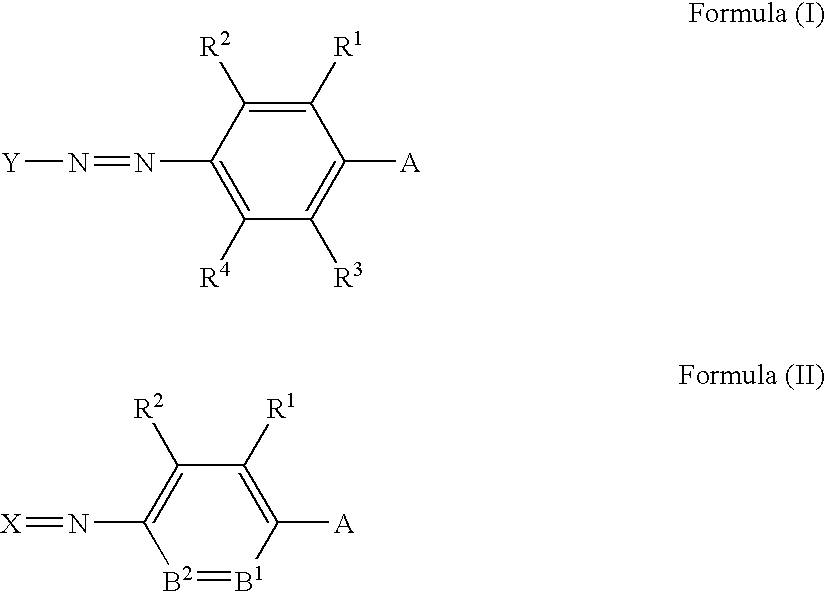Ink composition and ink-jet recording method
a technology of composition and inkjet, applied in the direction of inks, instruments, coatings, etc., can solve the problems of poor water resistance, poor light resistance, poor water resistance, etc., and achieve the effect of excellent ink ejectibility
- Summary
- Abstract
- Description
- Claims
- Application Information
AI Technical Summary
Benefits of technology
Problems solved by technology
Method used
Image
Examples
examples
[0370] The present invention will now be described in more detail by reference to the Examples, but the invention is not limited to the Examples. In the following Examples, “part(s)” and “%” are all by mass, unless otherwise specified.
production examples
Production Example 1
Preparation of Colored Fine Particle Dispersion (B-1)
[0371] Sodium hydroxide (2 mol / L) was gradually added to a mixed solution of 4 parts of tetrahydrofuran, 6 parts of tert-butanol, 1.5 parts of an oil-soluble polymer (PA-6) and 0.5 part of an oil-soluble dye (a-17), shown later, in an amount to neutralize the acid of the oil-soluble polymer, and the resultant mixture was heated to 70° C. Thereafter, the mixture was emulsified with stirring by gradually adding 30 parts of water. The obtained solution was concentrated at 30° C. under reduced pressure, to prepare a colored fine particle dispersion having a solids content of 16%. The particle diameter of the colored fine particles in the colored fine particle dispersion was 22 nm in terms of volume average diameter (determined by Microtruck UPA150 manufactured by Nikkiso Co., Ltd.). Hereinafter, this dispersion is referred to as a colored fine particle dispersion (B-1).
production example 2
Preparation of Colored Fine Particle Dispersion (B-2)
[0372] A mixed solution containing 3 parts of ethyl acetate, 0.5 part of cyclohexanone, 1.4 parts of an oil-soluble polymer (PA-1) and 0.6 part of an oil-soluble dye (a-17) was prepared. Separately, another mixed solution containing a 2 mol / L sodium hydroxide in an amount to neutralize the acid of the oil-soluble polymer, 15 parts of water and 0.3 part of sodium di(2-ethylhexyl)sulfosuccinate was prepared. The above two mixed solutions were combined, mixed and emulsified using a homogenizer, and concentrated at 30° C. under reduced pressure, to prepare a colored fine particle dispersion having a solids content of 13.3%. The particle diameter of the colored fine particles in the colored fine particle dispersion was 82 nm in terms of volume average diameter. Hereinafter, this product is referred to as a colored fine particle dispersion (B-2).
PUM
| Property | Measurement | Unit |
|---|---|---|
| dynamic surface tension | aaaaa | aaaaa |
| melting point | aaaaa | aaaaa |
| particle diameter | aaaaa | aaaaa |
Abstract
Description
Claims
Application Information
 Login to View More
Login to View More - R&D
- Intellectual Property
- Life Sciences
- Materials
- Tech Scout
- Unparalleled Data Quality
- Higher Quality Content
- 60% Fewer Hallucinations
Browse by: Latest US Patents, China's latest patents, Technical Efficacy Thesaurus, Application Domain, Technology Topic, Popular Technical Reports.
© 2025 PatSnap. All rights reserved.Legal|Privacy policy|Modern Slavery Act Transparency Statement|Sitemap|About US| Contact US: help@patsnap.com



